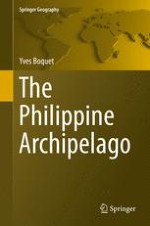2017 | OriginalPaper | Buchkapitel
14. Spatial Structures of the Philippines: Urbanization and Regional Inequalities
verfasst von : Yves Boquet
Erschienen in: The Philippine Archipelago
Aktivieren Sie unsere intelligente Suche, um passende Fachinhalte oder Patente zu finden.
Wählen Sie Textabschnitte aus um mit Künstlicher Intelligenz passenden Patente zu finden. powered by
Markieren Sie Textabschnitte, um KI-gestützt weitere passende Inhalte zu finden. powered by
